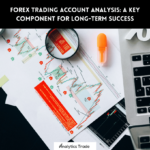What is the Force Index?
The Force Index is a technical indicator that measures the strength of a price move. It is calculated by multiplying the volume of a security by the difference between its current and previous closing prices. The Force Index was developed by Alexander Elder and is used by traders to identify potential trend reversals and to gauge the strength of a trend.
How Does the Force Index Work?
The Force Index is calculated by multiplying the volume of a security by the difference between its current and previous closing prices. The result is then smoothed using an exponential moving average (EMA). The EMA helps to reduce the noise of the indicator and to identify potential trend reversals.The Force Index can be used to identify potential trend reversals and to gauge the strength of a trend. When the Force Index is positive, it indicates that the current trend is strong and that the price is likely to continue in the same direction. When the Force Index is negative, it indicates that the current trend is weak and that the price is likely to reverse.
How to Use the Force Index for Scalping?
Scalping is a trading strategy that involves taking small profits over a short period of time. Scalpers typically use the Force Index to identify potential trend reversals and to gauge the strength of a trend.When the Force Index is positive, it indicates that the current trend is strong and that the price is likely to continue in the same direction. Scalpers can use this information to enter long positions. When the Force Index is negative, it indicates that the current trend is weak and that the price is likely to reverse. Scalpers can use this information to enter short positions.
How to Calculate the Force Index?
The Force Index is calculated by multiplying the volume of a security by the difference between its current and previous closing prices. The result is then smoothed using an exponential moving average (EMA). The EMA helps to reduce the noise of the indicator and to identify potential trend reversals.The formula for calculating the Force Index is as follows:Force Index = Volume x (Current Closing Price – Previous Closing Price)
Example of Calculating the Force Index
Let’s assume that the volume of a security is 100,000 and the current closing price is $50 and the previous closing price is $45.The Force Index can be calculated as follows:Force Index = 100,000 x ($50 – $45)Force Index = 100,000 x $5Force Index = 500,000
Conclusion
Scalping with the Force Index is a popular trading strategy for forex traders. The Force Index is a technical indicator that measures the strength of a price move and can be used to identify potential trend reversals and to gauge the strength of a trend. Scalpers typically use the Force Index to enter long positions when the Force Index is positive and to enter short positions when the Force Index is negative. The Force Index is calculated by multiplying the volume of a security by the difference between its current and previous closing prices and then smoothing the result using an exponential moving average.
Personal Opinion
I personally find the Force Index to be a useful tool for scalping. It is easy to calculate and can be used to identify potential trend reversals and to gauge the strength of a trend. I have found that using the Force Index in conjunction with other technical indicators can help to improve the accuracy of my trading decisions.






Comments